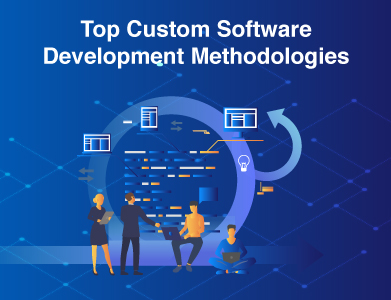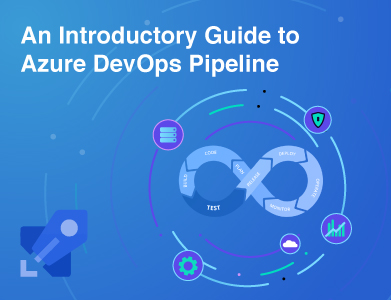Expertise
The year 2023 was about introducing AI to the world, 2024 went by exploring and implementing AI into everyday tech. Gone are the days when people used to say AI is the future, well the future is here, and it’s moving fast.
As the mobile app development industry continues to grow at lightning speed, choosing the right technology stack has never been more crucial. The decisions you make today could shape the success of your app in the years to come. In 2025, mobile apps will need to not only provide excellent user experiences but also keep up with advanced tech languages like AI integration, real-time data synchronization, and 5G adoption. Whether you’re a startup or an enterprise, future-proofing your mobile app is critical to long-term success.
In this guide, we’ll explore Top 10+ Mobile App Development Technologies for 2025, breaking down what makes each programming languages & technology essential, and how you can leverage them to future-proof your app, boost ROI, and differentiate from the competition.
Top App Development Languages to Explore in 2025
Put an end to the debate of choosing between iOS or Android app development. For the year 2025, tools like Flutter and React Native will make it easier to build apps for both platforms at once. Businesses will need to use these cross-platform tools to save time and money while reaching more users. Augmented reality (AR) and virtual reality (VR) are constantly on the rise, especially with devices like Apple’s Vision Pro already out on the market. Businesses should start thinking about how to use AR and VR to create more immersive experiences in areas like shopping, gaming, and education.
1) React Native: The Cross-Platform Powerhouse
React Native has consistently held its position as one of the top mobile development technologies. Its ability to create truly native apps for both iOS and Android from a single codebase is what makes it special. In 2025, React Native continues to shine because of its:
- Component-based architecture Enhances code reusability, significantly speeding up development.
- Hot reloading Developers can see changes instantly without recompiling, cutting down on iteration time.
- Active ecosystem Supported by a vibrant community with a plethora of third-party libraries and plugins.
Business Use Case
Apps like Instagram and Facebook Ads Manager leverage React Native’s powerful UI and smooth cross-platform experience to engage millions of users. If your goal is to quickly launch apps across multiple platforms without sacrificing performance, React Native is an excellent choice.
2) Flutter: The Future of Fast and Beautiful Apps
If speed and stunning user interfaces are what you're after, Flutter is an ideal framework. In 2025, it continues to dominate the cross-platform development space due to its:
- Hot reload feature Instant updates during the development process.
- Customizable widgets Craft visually rich apps with ease.
- Unified codebase Write once in Dart and deploy across Android and iOS.
- AI Integration Flutter has great AI integration capabilities with different libraries
Business Use Case
Companies like Google Ads and BMW rely on Flutter to build visually striking apps that run smoothly across platforms. With a growing community and continuous improvements, Flutter is ideal for businesses looking for performance and aesthetics.
3) Kotlin Multiplatform (for Android)
Kotlin has firmly established itself as the primary language for android development, and Kotlin Multiplatform is quickly gaining traction. For businesses seeking flexibility, it offers:
- Seamless integration with Java You can mix Kotlin into an existing Java codebase without rewriting everything.
- Null safety Kotlin’s built-in features reduce common coding errors, making your apps more reliable.
- Cross-platform development Write shared business logic for both Android and iOS architecture without compromising on platform-specific features.
Business Use Case
Major apps like Trello and Pinterest use Kotlin to improve code quality and reduce development time. It's perfect for Android-first apps that may want to expand into cross-platform down the line.
4) Swift: The Ultimate iOS Experience
For iOS app development, Swift remains the uncontested leader in 2025. Here’s why Swift is still crucial for iOS apps:
- Optimized performance Swift is built for speed, ensuring apps are responsive and efficient.
- Clean, readable syntax Its modern features and clear syntax improve code maintainability.
- Strong typing and error handling Reduce bugs and enhance reliability, leading to fewer crashes.
Business Use Case
Apps like Lyft and LinkedIn use Swift to deliver top-notch user experiences. If your app is focused on the Apple ecosystem, Swift should be your language of choice for unmatched performance and user satisfaction.
5) Xamarin: Code Once, Run Anywhere
Xamarin has long been the choice for businesses seeking a unified codebase for iOS, Android, and even Windows apps. With its foundation on .NET, Xamarin offers:
- Code-sharing capabilities A single C# codebase for all platforms.
- Native UI support Access to native APIs ensures your apps look and feel native on each platform.
- Platform-specific optimizations You can still customize certain aspects for each platform while sharing most of the code.
Business Use Case
Apps like FreshDirect and Storyo have used Xamarin to streamline their development processes. It’s ideal for companies invested in Microsoft’s ecosystem or for those looking for extensive cross-platform support.
6) Ionic: Streamlined Hybrid Development
Ionic is the perfect solution for developers who are comfortable with web technologies like HTML, CSS, and JavaScript but want to create mobile apps. It allows for:
- Quick ramp-up Web developers can transition easily to mobile app development.
- Cross-platform power Build apps for iOS, Android, and the web from a single codebase.
- Extensive component library Pre-built UI components save time on design.
Business Use Case
Brands like MarketWatch and Sworkit use Ionic to build and maintain their apps. If you’re looking to deploy apps rapidly across multiple platforms, Ionic is an excellent choice.
7) Progressive Web Apps (PWAs): The Best of Both Worlds
Progressive Web Apps blend the best aspects of web and native apps, offering:
- Offline functionality Works even with poor or no internet connection thanks to service workers.
- Discoverability Easily searchable through search engines, unlike traditional apps.
- Lower cost Reduces development and maintenance costs, as one app works across all platforms.
Business Use Case
Companies like Uber and Twitter Lite have adopted PWAs to reduce friction for users. PWAs are perfect for businesses looking to provide an app-like experience with lower upfront investment.
8) NativeScript: For Native Performance Using JavaScript

NativeScript is the go-to framework for JavaScript developers who want to build truly native apps. It provides:
- Native performance Access to native APIs ensures a fast and responsive app.
- Cross-platform support Share code between iOS and Android without sacrificing the user experience.
- Framework flexibility Use Angular, Vue.js, or plain JavaScript.
Business Use Case
Companies like MyPUMA and BitPoints Wallet use NativeScript to deliver high-performance apps. It’s ideal for teams with strong JavaScript skills but looking to build fully native apps.
Emerging Technologies: What's Next?
Looking to 2025 and beyond, these emerging trends & technologies are set to redefine how mobile apps are developed and used.
- Compose Multiplatform This declarative UI framework from Google allows you to build stunning, responsive interfaces for both Android and iOS with a single codebase. It simplifies UI development, making it easier to deliver consistent and sleek designs across platforms.
- Machine Learning in Mobile Apps The integration of AI enables apps to offer personalized experiences, such as intelligent recommendations, image recognition, and voice-based interactions. Expect more apps to use machine learning to deliver enhanced customer experiences, automation, and data-driven insights.
- Internet of Things (IoT) Integration As more smart devices become part of everyday life, mobile apps will increasingly need to connect seamlessly with IoT devices. This will allow for real-time data exchange, enabling automation in homes, healthcare, and industries through app-controlled smart devices.
- Augmented Reality (AR) and Virtual Reality (VR) Immersive experiences are the future, with AR and VR apps making strides in education, retail, and gaming. These technologies will blend the physical and digital worlds, offering users interactive, lifelike experiences.
- Beacon Technology Beacons enhance proximity-based interactions, offering location-specific content delivery in settings such as retail, museums, and events. With beacons, users can receive highly personalized and timely notifications based on their physical location.
- Wearable App Integration With the increasing use of smartwatches and fitness trackers, apps will need to extend their functionality to wearables. This allows users to interact with apps in more convenient ways, offering quick access to key features and real-time health or activity monitoring.
- Touchless UI As touchless interaction becomes more prevalent, designing apps that respond to gestures, facial recognition, or voice commands will enhance accessibility and user convenience. Touchless UIs also cater to growing hygiene concerns in public spaces.
- On-Demand Apps On-demand services like ridesharing, food delivery, and personal care are seeing rapid growth. In the coming year, apps in this space will continue to evolve, offering even faster and more convenient solutions powered by AI and automation.
Read More: Enterprise Mobility Trends in 2025
Final Words
The mobile app development platforms in 2025 will continue to evolve, with more focus on speed, performance, and cross-platform functionality. Whether you’re a developer, a small business, or an enterprise, choosing the right technology for your app is crucial. These technologies offer a mix of versatility, innovation, and efficiency to help you stay ahead in an increasingly competitive market.
01 What are the most popular mobile app development technologies in 2025?
The leading technologies for mobile app development in 2025 are React Native, Flutter, Kotlin, and Swift. Additionally, AI integration and 5G capabilities are emerging as important trends in the industry.
02Which mobile app development technology is best for cross-platform development?
For cross-platform development, Flutter and React Native are the top choices. These technologies offer excellent performance and versatility across different mobile operating systems.
03What are the advantages of using native mobile app development technologies like Kotlin and Swift?
Native development technologies such as Kotlin and Swift provide benefits including optimized performance, enhanced security features, and a more refined user experience tailored to specific platforms.
04How can I choose the right mobile app development technology for my project?
When selecting a mobile app development technology, consider factors such as the complexity of your application, target platforms, and your development team's expertise. These considerations will guide you towards the most suitable technology for your specific project requirements.
05What are some emerging mobile app development technologies to watch out for in the future?
Key emerging technologies in mobile app development include machine learning integration, augmented reality features, 5G network optimization, and expanded functionality for wearable devices.











